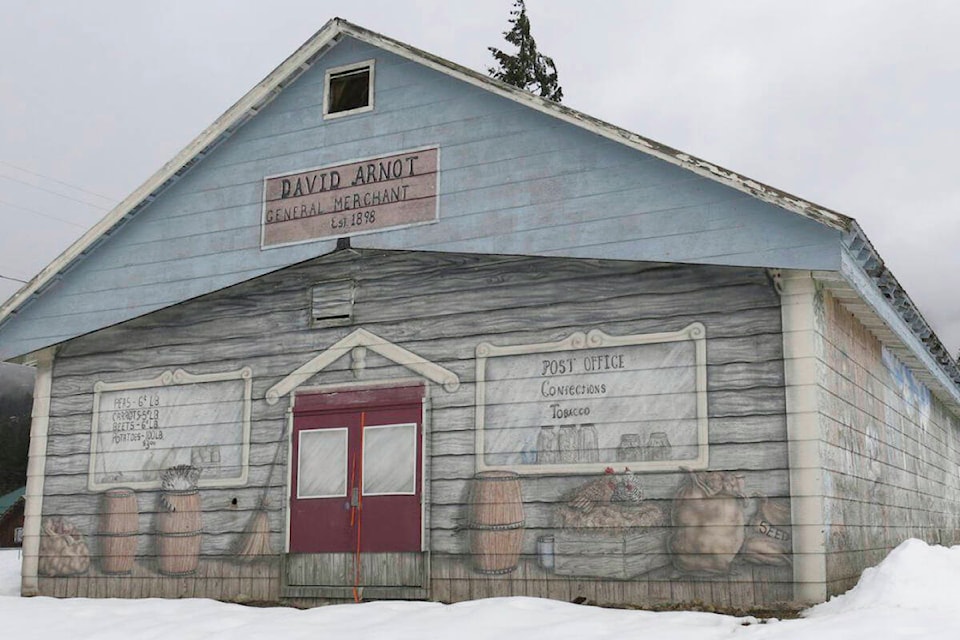by Mark Page
Local Journalism Initiative Reporter, Valley Voice
The old curling rink in the centre of Slocan is set to be replaced with bright new affordable housing units, and developers paid a visit to the site on Jan. 19 for an in-person look.
Village officials gathered on the property with members of the Slocan Valley Housing Society and M’akola Development Services to discuss the new development. The demolition of that structure must happen first and bidding on the contract to tackle the project should open in the coming weeks.
The Village traded prime waterfront real estate for this land back in the 1960s so a lumber mill could be built on the shores of Slocan Lake. The lot they received in the deal was in the centre of town and meant to be used only for recreation facilities, so the curling rink was built. Then the mill closed, and the Village bought back the waterfront land in 2020, which provides plenty of space for recreation.
The curling rink location was chosen for the housing development after the originally proposed site on the corner of Giffin Avenue and Slocan Street garnered considerable local opposition.
The project is to be funded primarily through grants from BC Housing.
As the group strolled around on a chilly morning, they noted how close the new housing would be to the school, post office and beach, and how the area is much bigger than they had expected.
“It’s super accessible for people,” said Slocan Valley Housing Society board member Ann Harvey. The housing society will be managing the development once built.
A bit of a discussion ensued about the possibility of adding more units to the project, with members of the housing society all-in for a couple more units.
“It would be really good to put in another studio or one-bedroom,” said society president Sally Mackenzie. “If you’re living in a hotel, a studio is a big step up.”
Sandy Mackey of M’akola cautioned that because funding for the project is coming from BC Housing, they might have to stick with the original ask of funding for eight units. “It’s worth exploring,” Mackey said. “I don’t know if it’s possible.”
He said that if the current project continues to be for eight units, it may not be much larger than the current curling rink building, though the septic field would take up considerably more space.
Plans for the demolition of the curling rink have been in the works for years as the building has become unusable without substantial renovation.
“It has been condemned for quite a while,” said Slocan Mayor Jessica Lunn. “To get it usable was in the millions of dollars.”
Slocan chief administrative officer Michelle Gordon already had contractors bid on the demolition project but the bids came back much higher than expected. Since then, they hired a company from Kelowna to deal with some asbestos removal, making the job a bit easier for a contractor not accustomed to dealing with hazardous materials. The Village may also have the removal of the old septic system done separately to bring costs down further.
“This has been on council’s list for a couple of years,” Lunn said.
Bits and pieces of the old curling club could be saved and structures like the two large flagpoles on the south side of the lot could remain in place to keep some historical record of the area. Mackey said this would be a conversation between the architects and Village.
Ideally, large trees on the property would stay, too, with Mackey saying they would only be removed if there were no other options. They would be hoping not to cut down trees that would be essentially irreplaceable.
Other questions revolved around the energy efficiency of the new units. The development will be certified as step four out of five in B.C.’s Energy Step Code, meaning it would be 40 per cent more efficient than standard construction. Mackey reckons this will make it the most energy-efficient development in town.
